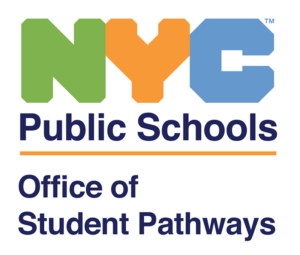Work-Based Learning - Internship Activity Guide

Internship Fact Sheet
What is an Internship?
An Internship is a highly structured, time-limited, Career Preparation activity in which students are placed at a worksite to participate in and observe work first hand.
Internships provide students the opportunity to learn by doing real work and being productively engaged in the workplace. They may provide the opportunity to work in teams, work on a project, or rotate through a number of departments and job functions.
Sustaining and growing Internships and all other work-based learning activities depend on maintaining positive relationships with the employers who are providing opportunities. These employers should be treated as valued customers and partners with frequent check-ins to address participation needs as they arise.
Internships are designed to:
- Promote hands-on experience in a field of interest.
- Provide productive value for the employer.
- Provide exposure to a wide range of careers and jobs within the industry.
- Offer opportunities to develop, practice and demonstrate employability skills.
- Build occupational knowledge.
- Create awareness of the education needed to be successful in the industry.
Internships are structured to:
- Enhance workplace knowledge and career awareness.
- Help build the skills required for specific occupations.
- Expose students to a wide spectrum of workplace activities.
- Support key academic concepts, as well as technical and occupational skills development.
Internships are supported by:
- Student preparation in the classroom.
- Internship design with the employer partner.
- Employer host orientation and ongoing troubleshooting.
- Multiple opportunities for reflection on the experience, both verbally and in writing.
- Employer assessment of skills acquisition.
Internships are connected to:
- Classroom learning.
- Individual career development/training plans.
- A sequence of educational, training and workplace activities.
- The student’s next steps.
Internships are one activity in the continuum of authentic work-based experiences provided to all students engaged in career-related programs or course of study in New York City Schools.
Internships are recognized as an “accepted and valid WBL activity” by NYSED and the New York City Public Schools for specific credit purposes.
Required Materials
Implementation Materials
Support Materials
Virtual Internships

Quick tips for Work-Based Learning Coordinators* to ensure a successful Internship
Before the Internship
During the Internship
After the Internship
*In New York State, this includes certified work-based learning coordinators and others who facilitate, arrange and support work-based learning activities for students.
Sample Internship Timeline
Tips for Success

Internship Virtual Options
Introduction
Translating an internship to virtual settings is perhaps one of the more straightforward of all the Work-Based Learning activities, as long as the activity and tasks of the internship can be completed virtually. While internships are generally conducted in the workplace or with a partner organization, in some cases interns may engage in an internship virtually and connect to their internship host and team members electronically via telephone, Skype, Zoom, WebEx, Microsoft Teams or some other technology. There are also virtual simulations available where a learner can select a particular career or occupation, conduct online research and then address and complete one or more mock work assignments for review by a teacher or connector.
Virtual Activity Options
Remember, virtual activities either promote “live” student contact with adult professionals and front-line workers via the use of technology, or are simulations and provide students with employer exposures through recordings, on-line research and related classroom activities.
Virtual Internships
In a virtual internship, a student is engaged in his or her internship virtually. Many industries and employer partners have recently shifted to a model where their employees work from home-based settings. Most of these employers have established protocols, communications systems and supports to ensure that work is productive, employees are engaged and connected to each other. These same protocols apply to interns who are completing their internship from home.
Steps to Success
Creating A Virtual Internship
To design an effective and meaningful virtual internship, look to what has been successful for in-person internships with your industry partners or your organization. The first step is identifying projects that are appropriate for virtual interns, such as those appropriate for an entry-level worker, that require minimal oversight. Consider the age, academic status, and skill set of your interns. Projects assigned to the interns should have clear and attainable goals. Informing interns of the connections between their projects and how they contribute to the organization can provide students an invaluable perspective.
Related Virtual Activities
Related Virtual Internships are simulations where a learner or group of learners can select a particular career or occupation, conduct online research and then address and complete one or more mock assignments for review by a teacher or WBL connector.
Related Virtual Internship Resources
The activities on the Virtual Internships website can be used in several different formats. The educator may:
Special Considerations
Resources & Links
Internship Student Research Activity
Intern Orientation to the Workplace
Work-Based Learning Activity Evaluation – Adult
Work-Based Learning Activity Evaluation – Student
Elevator Pitch Classroom Activity
Developing Your Elevator Pitch Worksheet
Writing a Resume Handout w Samples
Sample Resume for High School Students
Sample High School Intern Positions
Construction and Sustainability
Sample Learning Objectives
Desktop -Computer Support Intern
Digital Advertising Sales Intern
Junior-Graphic-Designer-Intern
Carpentry Trainee Intern or Apprentice
Logistics and Supply Chain Intern
